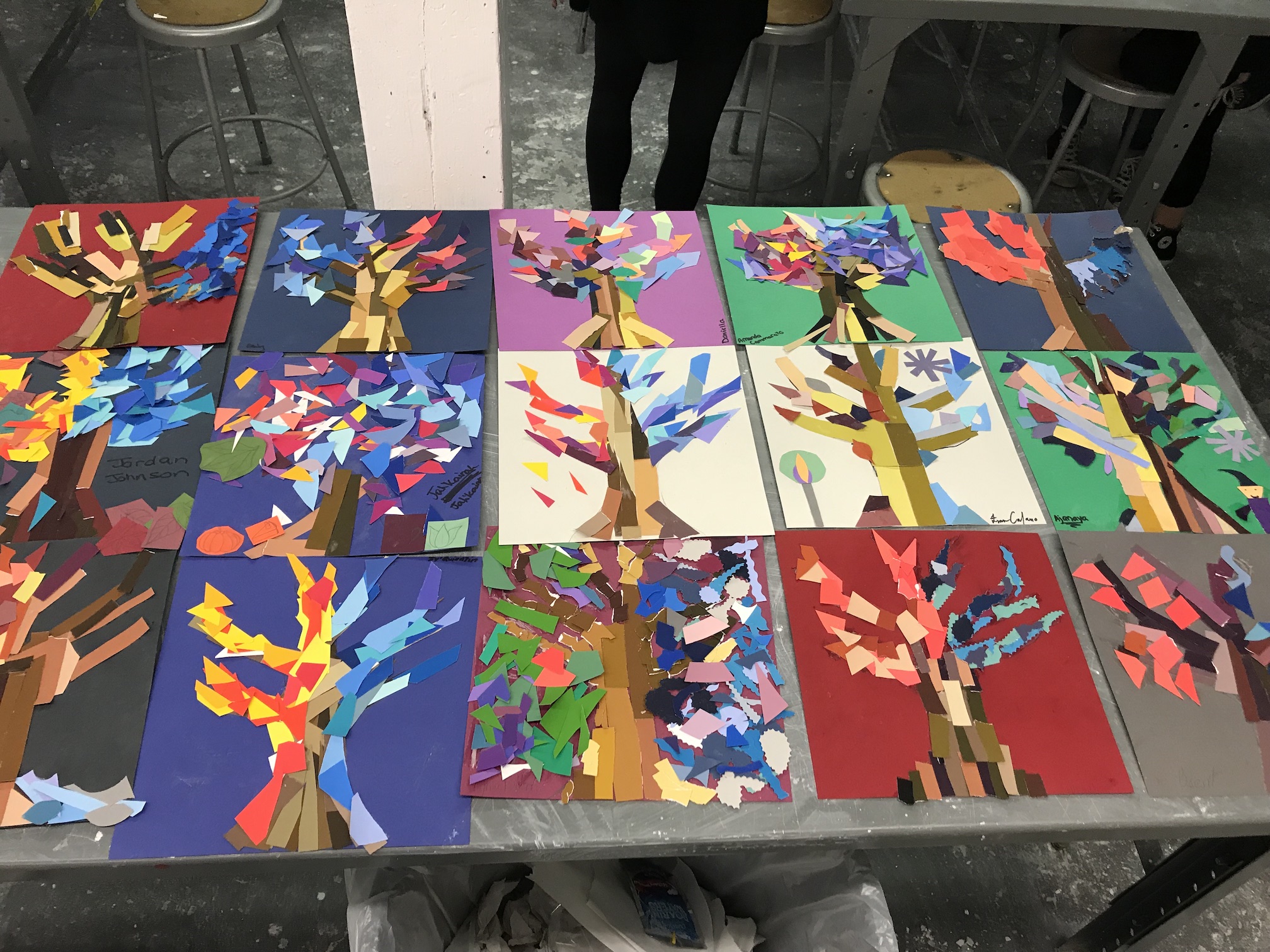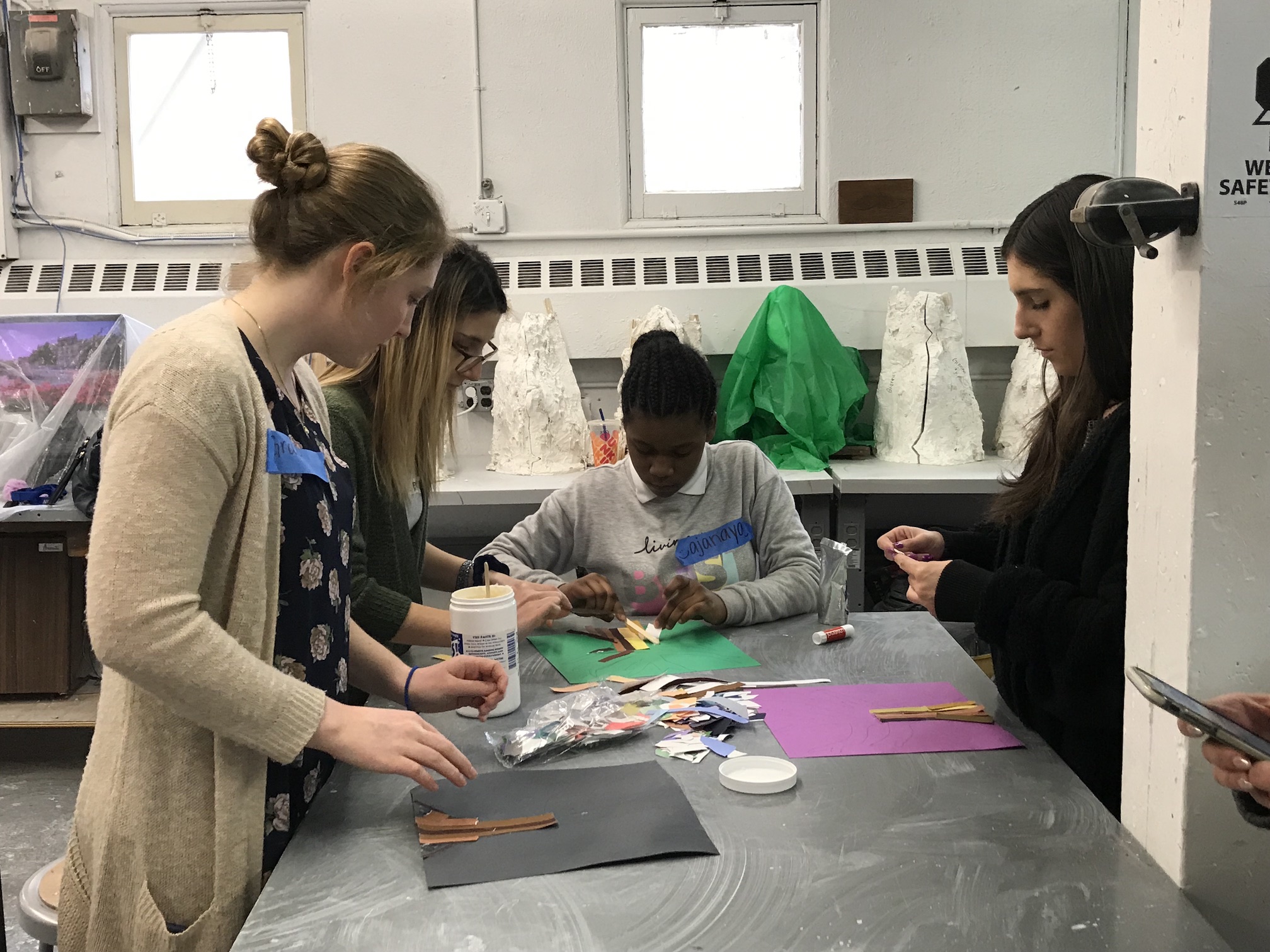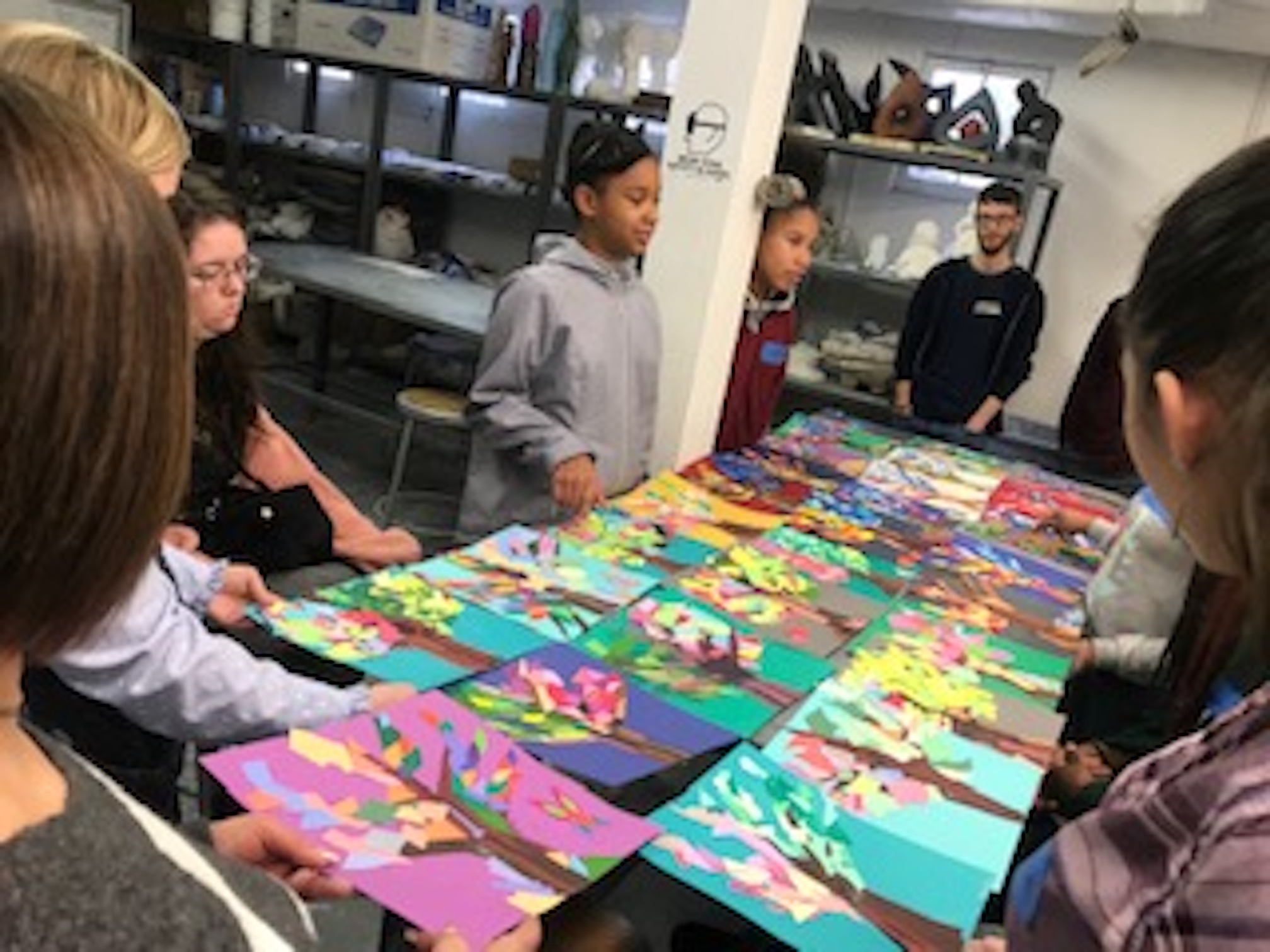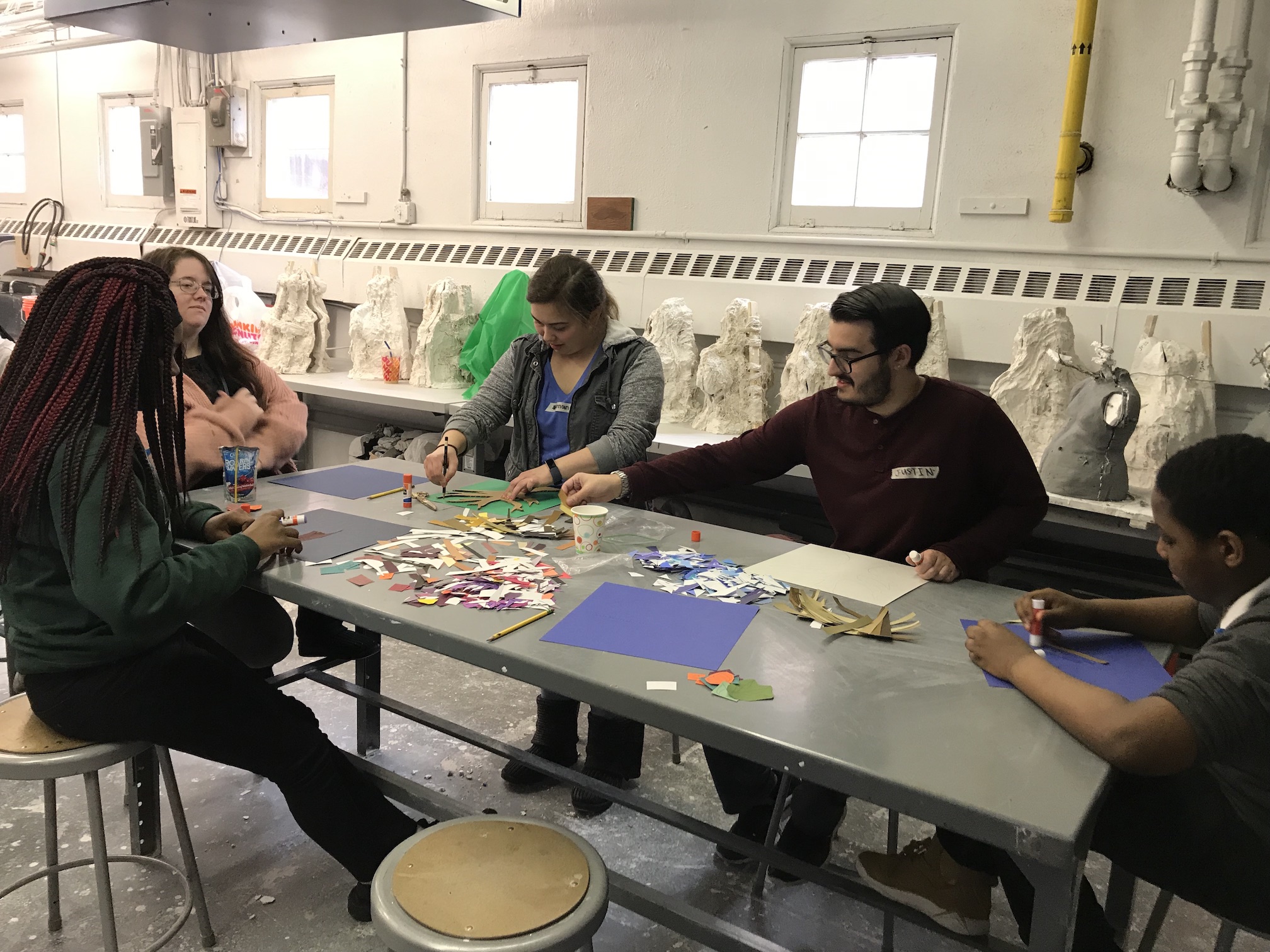There are many characteristics of a tree that we as humans can draw meaning from, as well as relate to our lives. Through studies regarding the science and symbolism in art, we have learned more about our relationship with nature.
We related the seasons to our own life cycles by looking at how a tree reacts to each season. The beginning of life is represented through spring, which is a time when trees begin to bloom with flowers and all living creatures are born and begin to grow. The summer is when trees begin to produce fruit and receive the most amount of sun. This is when trees do the most of their growing, so we related it to our youthful years of childhood to early adulthood. In autumn, the leaves on a tree begin to change color because they produce less chlorophyll, thereby turning the leaves yellow, orange and red. Eventually, the leaves fall off its branches which relates to adulthood and growing older. The last season, winter, is when the trees have no leaves. Since there’s little sun in the winter, it takes too much energy to grow and maintain leaves, so, instead, the trees stay dormant until spring. Together we read the poem, Winter Trees by William Carlos Williams, and related this season to the end of life, but a hope for new life again.
Our art project was a collage using color aid paper. The students made one tree that showed both spring and summer, then another collage of a tree that showed fall and winter. They were then able to use different colors from each of the seasons for their tree collages.
For a full gallery of images and artwork from the entire 2019 D-Eco-Self Trees, click here.






